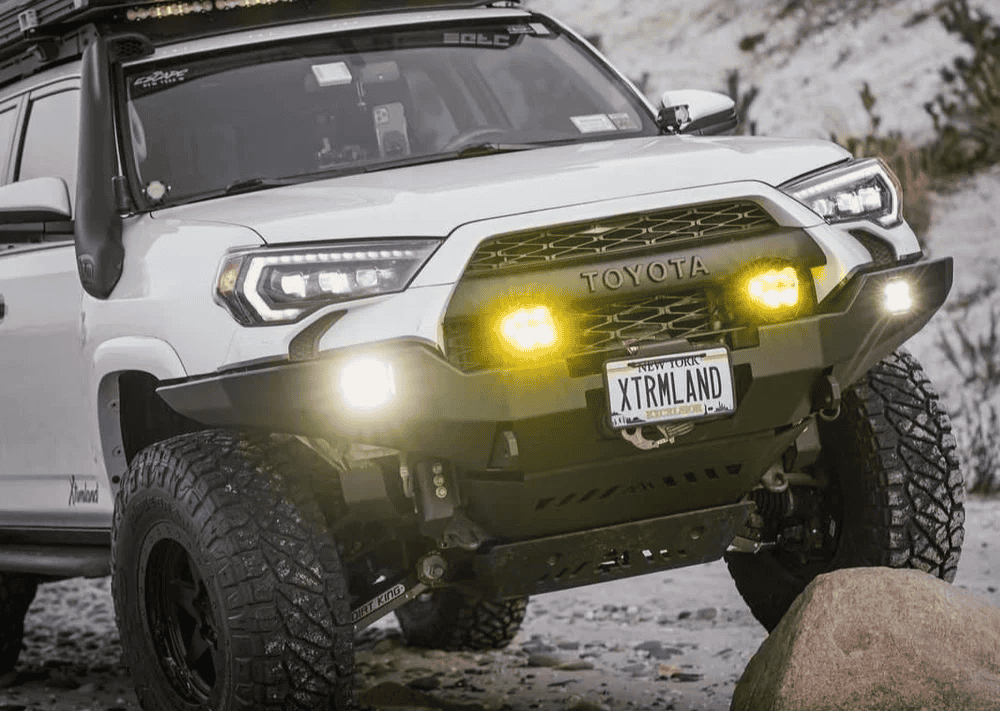Overland Vehicles

Winter travel starts with traction. True winter rated tires with the mountain snowflake symbol use soft compounds that grip in cold and siping that channels slush. Narrower sections bite through powder to the firm layer below, while a modest sidewall helps absorb choppy ice ruts. Chains add margin on steep passes where local rules require them, but practice installation in the driveway before a storm hits. Pair this with a conservative tire pressure strategy that maintains contact without overheating carcasses in long climbs.
Braking and steering matter as much as acceleration. Fresh brake fluid resists moisture saturation that can freeze at altitude. Wiper blades rated for winter shed ice and keep the screen clear as spray freezes. Headlights benefit from warm color temperatures that cut through snow glare and a reliable lens heater or defroster strategy. Underbody corrosion protection slows salt damage and keeps fasteners serviceable when you need to swap a part in cold wind.
Full time all wheel drive or a thoughtful four wheel drive setup with a true low range helps manage slow technical climbs on icy access roads. A rear locker can stabilize a heavy rig on off camber turns, while a limited slip differential helps in mixed traction scenarios like plowed gravel with patches of ice. Keep transfer case and differential fluids within winter viscosity specs, and inspect breathers to prevent freeze related pressure issues.
Cabin heat is your lifeline after a wet lift ride. Fuel fired air heaters sip diesel or gasoline and deliver dry heat that limits condensation. Size the heater to the cabin volume so it can maintain comfort without short cycling, and route intake and exhaust where drifting snow will not bury ports. Complement heat with layered insulation that addresses conduction, convection, and radiant loss. Use foam in cavities where possible, thermal breaks on metal ribs, and smart window covers that trap a dead air layer.
Power systems must work when temps drop well below freezing. Lithium batteries lose output in deep cold, so add a heating plan that may include insulated enclosures with thermostatic pads or an air loop tied to the main heater. Keep alternator charging reliable with clean grounds and short cable runs, and consider solar as a top off strategy on clear days at altitude. Moisture control safeguards electronics, so vent the cabin and use a drying routine after cooking or gear changes.
Cold air is dry until you breathe in it. Cooking, drying gloves, and even sleep add moisture that becomes frost behind panels. Controlled ventilation through a roof fan and cracked window moves moist air out without losing all the heat. A small gear drying cabinet with active airflow preserves fabrics and keeps morning layers warm, reducing the urge to blast the heater at dawn.
A winter layout thrives on separation. Wet zone near the entry, dry living zone away from spray, and a sealed ski locker that vents to the outside. Racks with drip trays protect flooring while channeling water to an easy to clean area. A bench with boot dryers and a heat safe outlet turns transition time into a quick routine. Keep avalanche beacons, shovels, and probes stored within reach but isolated from wet gloves to preserve electronics.
Food and water need winter tactics. Store water in insulated containers inside the cabin rather than under the rig, and plan a heating method to thaw spigots if they chill. Choose meals that cook fast to reduce condensation, and carry a backup stove option that functions at altitude. Fuel selection matters since some canisters struggle in cold, so research blends rated for subfreezing mornings.
Mountain travel rewards caution. Check avalanche forecasts when parking near slide paths, and give plow crews space on narrow passes. Carry traction boards, a long handle shovel, a tow rope with rated soft shackles, and a compact air compressor. Communications like satellite messengers and weather aware navigation help when cell towers are buried or distant. Leave a plan with a friend, build in margins for road delays, and keep an overnight kit accessible from the front seats.
If this checklist reads like a system, that is because winter builds succeed when every piece works together. A professional shop can integrate heat, power, storage, and safety without compromise, and validate the layout before the first storm. OZK Customs designs cold proven rigs that keep drivers fresh on icy roads and skiers warm at camp. Explore our overland rigs to see the platforms we upfit for mountain travel, then look at our custom overland upfit process for winter systems like fuel fired heat, insulated enclosures, and ski lockers. If you are comparing builders, read why choose OZK Customs to understand our approach to safety, craftsmanship, and client handoff in Fayetteville.
We start by listening. Tell us your home mountain, the crew you travel with, and the conditions you chase. Our team will map a build that manages snow, heat, power, and storage in one cohesive package, then deliver a rig that feels intuitive from the first powder day.
At OZK Customs we build complete custom overland rigs and partial upfits for ski season and year round travel. We do not rent vehicles or sell RVs. Our services include winter focused layouts, integrated power, lighting, racks, and fabrication.
Tell us your mountain, timeline, and crew size. We will blueprint a cold proven overland rig, price it clearly, and schedule your build slot.
ADDRESS:
6159 E Huntsville Rd, Fayetteville, AR 72701
PHONE:
(479) 326-9200
EMAIL:
info@ozkvans.com